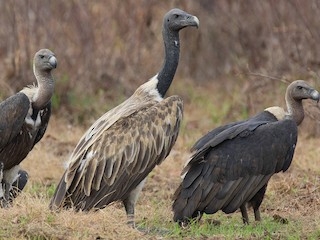
The slender-billed vulture, or Gyps tenuirostris, is a medium-sized somewhat dishevelled-looking bird. It has a black, featherless head and neck, piercing dark eyes and long, slender bill. Its back and chest are covered in dark-brown, light brown and beige feathers. Its legs, partially covered with cream-coloured feathers, are visible in flight, making it easy to distinguish this vulture from other species.
This bird is native to South-east Asia and sub-Himalayan areas. It is found in India in the Gangetic plain, in Himachal Pradesh, northern Odisha and Assam. It is also found in north and central Bangladesh, southern Nepal, Burma and Cambodia.
It prefers arid, open country and wooded patches, generally at lower elevations, to forage, feed, roost and nest. Though it tends to avoid human-inhabited areas, the lure of an easy meal pulls it in. It has an estimated lifespan of around 20 years. These birds don’t make any particular sounds except for an occasional hissing or cackling.
Males and females are hard to tell apart and not much is known about its breeding behaviour. These vultures make a large, bulky nest in tall trees, cliffs or abandoned buildings. The female generally lays 1 egg with pale red blotches. The incubation period lasts for 50 days.
As with the Indian vulture, the slender-billed vulture was also brought close to extinction due to ingesting Diclofenac from dead cattle. It is listed as ‘Critically Endangered’ on the IUCN Red list.
In attempts to revive its population, captive breeding efforts in India began in 2006 in a captive-breeding facility in Pinjore, near Chandigarh. The joint efforts between the RSPB (Royal Society for the Protection of Birds) and the Zoological Society of London resulted in the first successful captive breeding in 2009.
Picture Credit : Google




